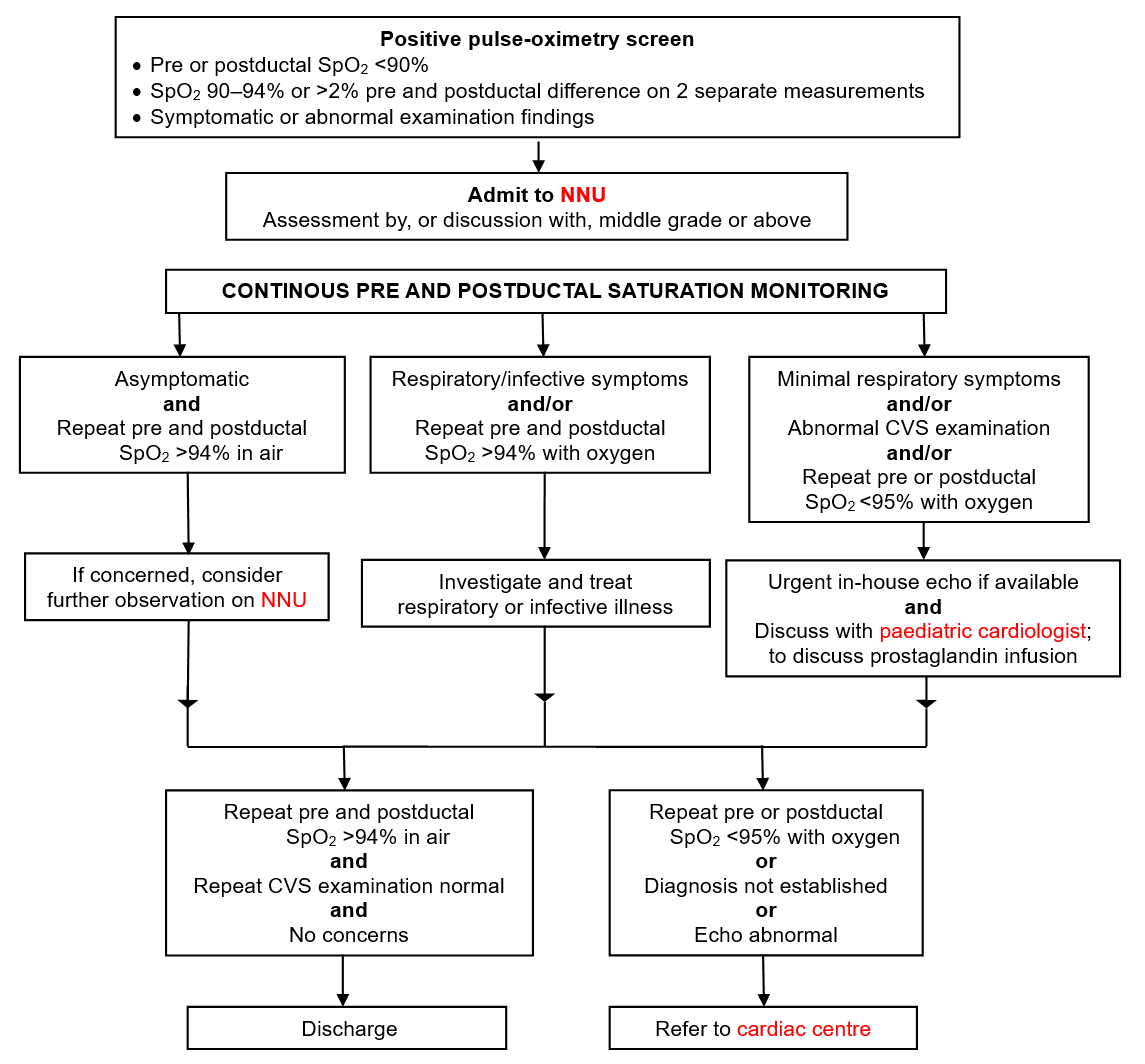INTRODUCTION
- Used in most UK maternity units following results and recommendation of pulse-oximetry study to detect critical congenital heart defects for babies born ≥34 weeks’ gestation in addition to, but usually before clinical examination
- serious non-cardiac conditions may also be identified
Flowchart 1: Pulse-oximetry screening test

POSITIVE PULSE-OXIMETRY SCREEN (ABNORMAL TEST)
Initial assessment of test-positive baby
Assess cardiac and respiratory systems
- Is baby symptomatic?
- quiet, less responsive
- temperature instability
- tachypnoea with respiratory rate ≥60 min
- respiratory distress
- grunting respirations
- nasal flaring
- chest wall recession
- apnoea
Examination
- Abnormal breath sounds
- Heart murmur
- Weak or absent femoral pulse
- Response to oxygen therapy
History
- Previous cardiac defect or congenital infection?
- Suspicion of congenital abnormality on antenatal scan?
- Maternal illness during pregnancy, including diabetes?
- Drug ingestion during pregnancy (anticonvulsants)?
- PROM
- Positive maternal culture
- Maternal fever or raised inflammatory markers
- Foul-smelling liquor
- Mode of delivery
- Need for resuscitation (Apgar score)
MANAGEMENT OF TEST-POSITIVE BABY
Any test-positive baby
- See Flowchart 2
- Seen by appropriately trained paediatric staff
- Seek advice from paediatric middle grade or above
Admission
- Admit to NNU for assessment if:
- abnormal examination findings or
- pulse-oximetry screening positive on 3 occasions (see Flowchart 2)
Investigations
- If respiratory/infective condition suspected from history/examination and
saturations improve with oxygen- FBC/CRP/blood culture/chest X-ray as appropriate
Echocardiogram
- Indicated if any of the following:
- CVS examination abnormal
- no respiratory signs
- no response to oxygen
- low saturations persist
- no satisfactory explanation
- If echo unavailable, contact consultant regarding prostaglandin E2 infusion/paediatric cardiology input (see Congenital heart disease and Prostaglandin infusion guidelines)
Flowchart 2: Positive pulse-oximetry screen (abnormal test)

Date updated: 2024-01-18